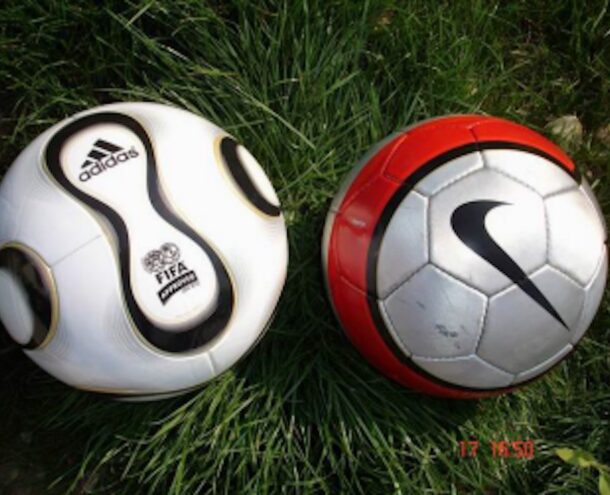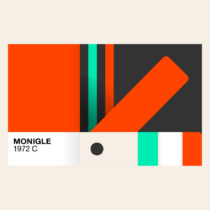How Nike Beat Adidas at the Women’s World Cup

Nike vs. Adidas
The Women’s World Cup is still fresh on everyone’s mind; people continue to beam with USA pride as the US Women’s National Team brings home the FIFA trophy, inspiring young women athletes around the nation.
It is not only the World Cup and “football” that opened new doors for brands this summer – rising interest in women’s sport in general means companies have new audiences to target. And whether you call it “soccer”, “sokker”, “football”, or “fútbol”, brands are listening.
While Adidas may be the official soccer ball provider of the Women’s World Cup, it fell flat beyond the one connection that puts it directly on the “pitch”; there is no other mention of their relationship with the Women’s World Cup on its website, nor any additional focus on women in sports overall. For a brand that is constantly in the shadow of Nike, it is a missed opportunity that as a sponsor of the WWC, Adidas didn’t leverage its relationship to nearly the same extent as its biggest competitor.
Nike, on the other hand exemplified its commitment investing in women’s sport. The elevation of female soccer goddesses Leroux, Morgan, and Rapinoe as strong and accomplished figures worthy of admiration paid off handsomely with the U.S. Team’s victory.
According to an article from brandchannel.com, Nike was the most mentioned brand in tweets leading up to and during the final match. Between June 6 to July 5, digital marketing agency Amobee found that Nike was 121% more associated with the World Cup than Adidas.
Earlier this year, I was lucky enough to tour the Nike corporate headquarters in Beaverton, OR. Besides witnessing employees sporting their fresh Nike “kicks”, hearing about their testing of different products, and knowing that every building is named after a professional athlete, Nike carries its athletic spirit throughout everything it does. My affinity for Nike and its products was only strengthened by the trip.
As an advocate for delivering authentically to a specific target audience, there are a few lessons that Nike can teach us:
1. The Game Plan: Consistency
Familiarity is a key player; the more often a brand is able to talk in the same, authentic way, the more successful it will be in building brand equity and loyalty. Nike has gained traction with consumers by delivering a clear, consistent message over a number of years amongst ups and downs that may have taken place. Nike stays relevant and fresh, bringing new ideas to campaigns while ensuring that everything it does remains consistent with its overall brand and identity. In taking a perspective from the B-to-B side of the branding world, consider Gardner Denver. Never heard of them? The “go-to guys” for all things pumps, compressors, blowers, loading arms, and fuel systems, have mastered brand equity and consistency; the company is so well regarded that its latest annual report calculated 43% of its value to be goodwill and other intangible assets…clearly the brand is acting consistently on-brand and with a customer-focus across their numerous acquisitions.
2. Be a Playmaker: Engage the Fans
As a millennial, I’m connected via Facebook, Instagram, Twitter…you name it, and I most likely have an account, and am somewhat familiar with the brand’s social media’s content. Today’s world is driven by the digital and the mobile; Nike offers several different Instagram, Twitter and Facebook accounts, catering to the consumer and their interests, seeking to inspire the audience on their terms. This year’s Women’s World Cup final on Fox drew a record US audience for a soccer game, beating both baseball’s World Series and the NBA finals; ranging from 21 to 23.5 million people, viewers from all over the nation were tuning in according to Sports TV ratings. With statistics like that, brands will continue to reinforce their name during the high-traffic event that comes around every four years; FIFA may even consider hiring women into their marketing team, the key target audience—and purportedly less corruptible—to help fix its brand image, its flawed reputation still in the spotlight. By engaging members of the time-relevant audience in a rebrand and refresh, the FIFA name is taking steps in the right direction, meeting the fans on their turf. Outside of the sporting industry, Samsung’s SDI division, although a B-to-B brand, has engaged their end customers in a truly unique way; they mold their product offerings to have a focus on the end user and the future of technology, an area in which all audiences of today’s world have knowledge and experience.
3. Keep the Ball: First Touch All the Way to the Personal Touch
Fans—of Nike, of soccer, of the Women’s World Cup—live for the experience; they are looking to connect with commercials, to look fit and athletic in Nike activewear, to aspire to be the Olympic athletes featured in advertisements. While several brands are spinning their wheels, still stuck in the mud with their efforts to inspire women through breaking social barriers and gender roles, Nike jumps straight to the front, with campaigns running prior to the start of the Women’s World Cup, motivating and challenging females to overcome insecurities through fitness. And as a viewer (and sharer) of these commercials, the extra step Nike takes to make it personal definitely resonates with audiences, and in this case, the female athlete. As a tried and true soccer player for the past 18 years, I still picture the reruns of Brandy Chastain’s celebration at the 1999 World Cup, interviews with Mia Hamm about team comradery, and can easily recall the feelings of being inspired by these women sporting the stars and stripes.
Nike exceeds the standards on these three basic principles, enabling the brand to consistently top the likes of Adidas, Under Amour and Puma. Its lack of official sponsorship of the Women’s World Cup didn’t put a speed bump in its marketing and branding plans; Nike continues to surge ahead, sprinting past the opponent in terms of digital platforms and consumer journey/touchpoints, all in order to score the winning goal.
To learn more about our approach to branding visit our website.
Jordyn Greenberg is a Strategy Analyst and is passionate about both brand and sport, an avid soccer fan with 18 years of playing under her belt.



